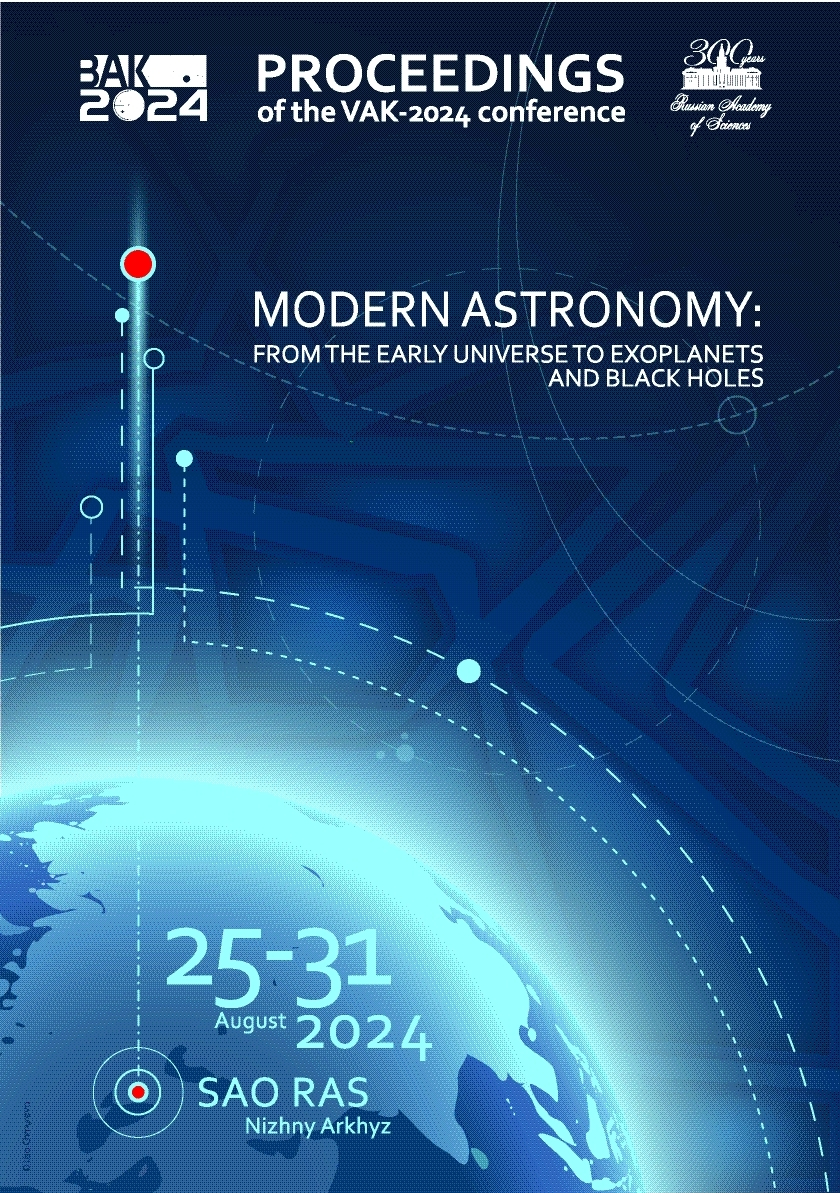Physical Faculty of Moscow State University
Russian Federation
UDC 53
UDC 520
UDC 521
UDC 523
UDC 524
UDC 52-1
UDC 52-6
CSCSTI 41.00
CSCSTI 29.35
CSCSTI 29.31
CSCSTI 29.33
CSCSTI 29.27
CSCSTI 29.05
Russian Classification of Professions by Education 03.06.01
Russian Classification of Professions by Education 03.05.01
Russian Classification of Professions by Education 03.04.03
Russian Library and Bibliographic Classification 2
Russian Library and Bibliographic Classification 223
Russian Trade and Bibliographic Classification 614
Russian Trade and Bibliographic Classification 6135
BISAK SCI004000 Astronomy
BISAK SCI005000 Physics / Astrophysics
The fractal nature of the stellar medium in the Solar vicinity has been established by studying 200 000 stars of all spectral types at distances of 1 to 100 parsec from the Sun. The fractal dimension is $D \approx 2.41$. Based on the data obtained, we examine the kinetic properties of the fractal stellar medium in the solar vicinity. We show that kinetic parameters such as correlation length, dynamic friction coefficient, effective interstellar distance for fractal stellar medium differ from the1 corresponding parameters for quasi-homogeneous medium with limited density fluctuations, and depend on the fractal dimension. We find that the fractal structure of the stellar medium leads to a reduction of the relaxation time in our Galaxy.
Galaxy: evolution, solar neighborhood, structure; stars: kinematics and dynamics
1. Binney J. and Tremaine S., 2008, Galactic Dynamics, Princeton Univ. Press
2. Carpenter E., 1938, Astrophysical Jornal, 88, p. 344
3. Chumak O. and Rastorguev A., 2016, Astronomy Letters, 42, p. 307
4. Chumak O. and Rastorguev A., 2017, Monthly Notices of the Royal Astronomical Society, 464, p. 2777
5. Davis M. and Peebles P., 1983, Astrophysical Journal, 267, p. 465
6. de Vaucouleurs G., 1970, Science, 167, p. 1203
7. Mandelbrot , B., 1977, Fractals: Form, Chance and Dimension, W. H. Freedman and Co., San Francisco






